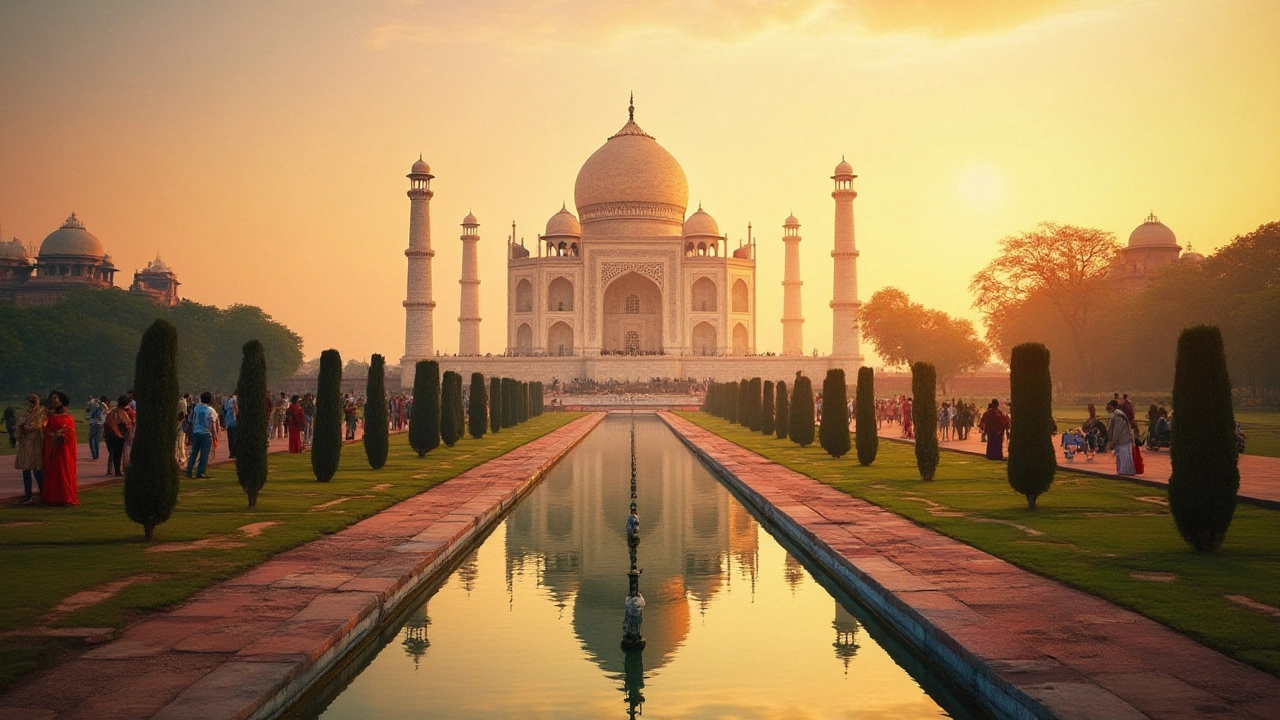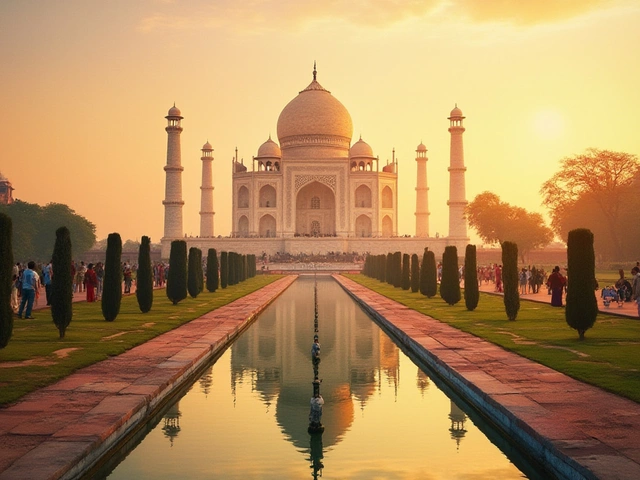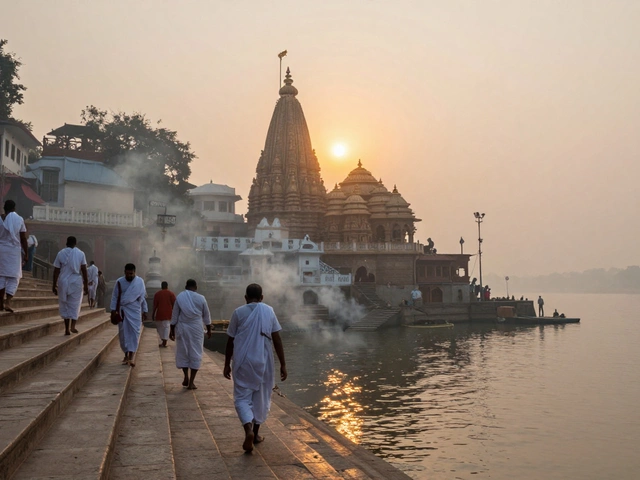Every year, nearly as many people visit this one spot in India as live in New Zealand—about 7-8 million tourists, according to pre-pandemic numbers. They stream through the intricately carved entry gates, eyes wide, mobile phones raised, and sometimes a little breathless with anticipation. No need to guess. The most visited destination in India isn’t a city, a palace, or a beach: it’s the Taj Mahal in Agra. People come chasing something they’ve seen thousands of times on postcards and Instagram, but the real deal always feels fresh, kind of like seeing an actor you love at the shops—unbelievable, until you’re right there. If you’re hoping to experience India’s show-stopper, here’s everything you need to know to make that trip truly memorable.
The Magic of the Taj Mahal: Why Everyone Keeps Coming Back
The Taj Mahal isn’t just a world-famous icon; it’s also an emotional touchstone for millions. Built in the seventeenth century by Emperor Shah Jahan as a tribute to his beloved wife Mumtaz Mahal, the structure is almost heartbreak frozen in gleaming marble. Every detail tells a love story, from its perfectly symmetrical gardens to the fragments of poetry etched into its panels. And the crowds—trust me—are just as swept up as you’ll be. Foreign travelers, school groups, locals from other parts of India, wedding photographers, and travel bloggers jockey for the best angles. UNESCO declared the Taj a World Heritage Site back in 1983, but people were traveling from distant lands to see it even centuries before hashtags were a thing.
Here’s a little-known fact: If you visit at sunrise or sunset, the marble changes colour—soft pink at dawn, dazzling white by midday, glowing gold at dusk. Early birds sneak in for that magical moment when mist rises from the Yamuna River and the lawns glisten from overnight dew. The peace is short-lived, but unforgettable. At night, on just five days each month around the full moon, you can actually visit for a very exclusive moonlight viewing. It feels like a scene straight out of a fairy tale—cool, quiet, and impossibly majestic. Tip: tickets for this are limited and sell out insanely fast, so plan ahead.
Rumour has it, artisans who worked on the Taj had their hands cut off to keep them from recreating its beauty elsewhere. Historians now mostly agree this is just a myth, but it captures the mythical status the Taj holds. And speaking of myths—don’t fall for anyone selling “secret” tickets or VIP entry; stick to the official ticketing site or counters. Skip-the-line tours can help, but only book with licensed guides. Watch out for monkeys too. Really. They like snacks, sunglasses, and unattended mobiles, and have zero respect for personal space.
Want a unique Taj experience? Try the Mehtab Bagh gardens on the opposite side of the river. Few crowds, panoramic views, and that dreamy symmetry make it an under-the-radar gem. And if you’re after that classic reflection photo, go after the monsoon, when shallow pools form on the forecourt and mirror the domes perfectly. Not a professional photographer? Don’t sweat it. Even your dodgy phone cam will deliver something spectacular here.
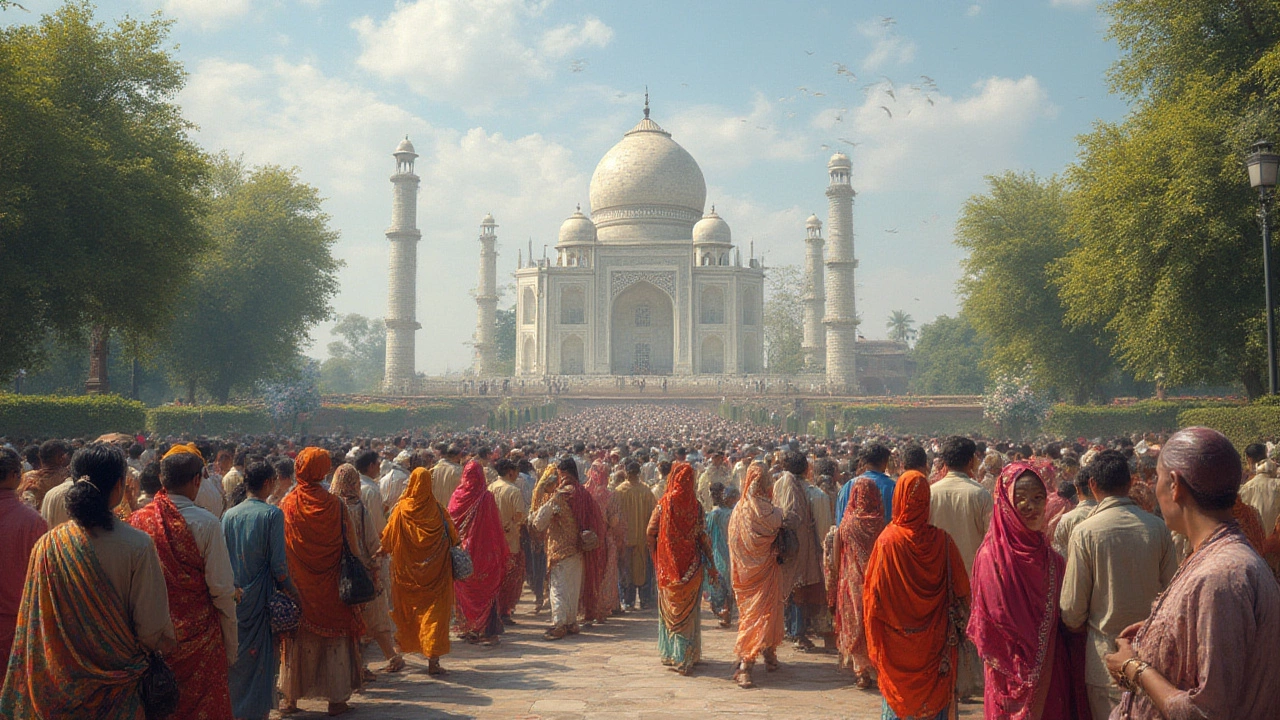
Beyond the Taj Mahal: Exploring Agra and Heritage Tourism
Now, Agra itself is pretty much synonymous with the Taj, but it’s full of surprises if you’re willing to look beyond the main act. Agra Fort is just 2.5km away and often gets overshadowed. Picture immense red sandstone walls, labyrinthine passageways, ornate chambers, and terraces with secret views to—you guessed it—the Taj. Emperor Shah Jahan actually spent his last years imprisoned here by his own son, staring at the monument he built for his wife. Slightly poetic, a bit tragic, and totally fascinating for anyone who loves history tales with a twist.
The city hosts other heritage treasures, too—Tomb of Itmad-ud-Daulah (sometimes called ‘Baby Taj’) features delicate marble work that many believe inspired the Taj Mahal’s own artistry. Fatehpur Sikri, just 40 minutes from Agra, was once the capital of the Mughal Empire. When you walk through its ghostly courtyards and ornate gates, it feels like stepping into a forgotten storybook.
Agra is a food adventure in itself. Try petha (a sweet made from ash gourd, shockingly addictive), kebabs sizzling on street-side grills, hot masala chai at every corner, and the legendary Mughlai cuisine at popular local spots. If you’re traveling from outside India, don’t skip the filtered water and stick to hot foods if you’re not used to local microbes. Many visitors like to do day trips from Delhi, but spending 2-3 days lets you absorb the atmosphere, wander the crafts markets, unearth hidden rooftop cafes, and actually relax into the city’s rhythm instead of sprinting off after a single selfie.
When it comes to getting around—rickshaws rule for short distances, but radios taxis (booked via apps like Ola or Uber) make getting between highlights easier and safer, especially at night. For the best local handicrafts, check out Sadar Bazaar—marble miniatures, leather goods, and brass trinkets abound, and bargaining is expected. If you want the real deal (not factory knock-offs), ask hotels for artisan galleries or government emporiums, which often feature demonstrations and fixed prices. And yes, you’ll see plenty of hawkers, but a polite no and a genuine smile work wonders.
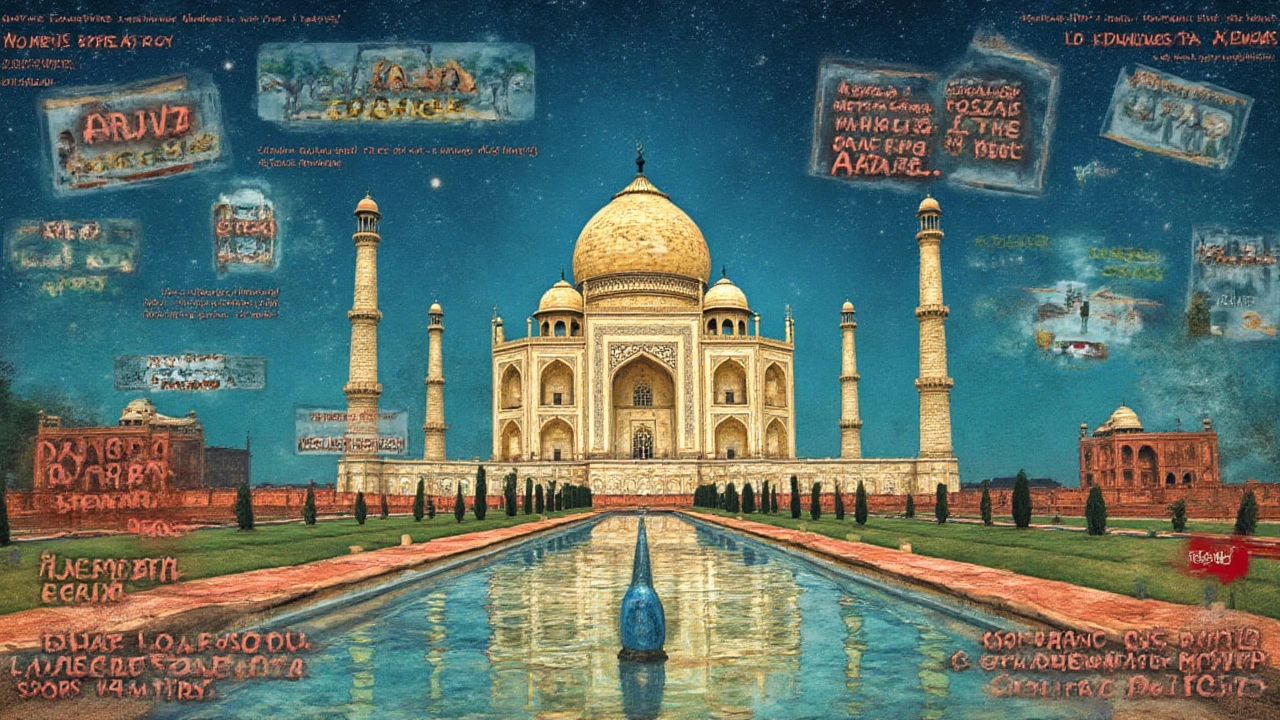
Tips for First-Time Visitors and Insider Insights
Right, so if you’ve set your sights on India’s top destination, a few insider tips will make your trip smooth and memorable. Agra can get fiercely hot April to June—the kind of heat that fries your brain and your phone batteries. The sweet spot for a visit is October to March: warm sun, crisp mornings, cool nights, and smog is much less of a pain. During big Indian holidays like Diwali or Holi, the Taj Mahal sees peak crowds; for breathing room, avoid weekends and major festivals if you can.
Women travelers usually feel safe in Agra’s tourist areas, but solo wanderers should stick to well-lit streets, especially after dark. A lightweight scarf comes in handy—not just for modesty at religious spots, but for sun cover and facing sudden dust storms. Footwear tip: the Taj requires shoe covers (provided with tickets), but wear comfy shoes for all the walking you’ll do around Agra. Dress light, keep a sun hat handy, and pack sunglasses that aren’t too precious (see earlier monkey note—trust me).
If you want pro travel snaps, sunset and sunrise are both magical, but mid-morning often works best for sky clarity and fewer fog/fume issues. Drones are a no-go at the Taj without special government permits, so leave them at home unless you like lengthy chats with security. If you’re a parent, the Taj complex is stroller-friendly, but markets and older buildings are cobblestone chaos—slings or carriers will save your arms and sanity.
For entry tickets, the Indian government now runs an online booking system. Foreigners pay about Rs 1300 for all-inclusive entry, and locals pay much less (a nice treat for Indian citizens). If you want to see the main tomb, there’s an extra fee (totally worth it for the extra close-up detail). Carry ID, as random checks do happen. No food, alcohol, drones, big bags or tripods allowed inside—that picnic you planned on the lawns? Sorry, won’t happen.
If you feel like splashing out, Agra has some incredible heritage hotels—think Mughal-era palaces converted into five-star wonders. On a tight budget? Try simple guesthouses close to the East or South gates, which double as great launch pads for early morning Taj viewings. Don’t expect much nightlife apart from hotel bars, but local performances—classical music, dance recitals—sometimes pop up around festival times. Keep an eye out for flyers in your hotel lobby.
Agra’s train station (Agra Cantt) is the main arrival point from Delhi, Jaipur, and Varanasi. Shatabdi and Gatimaan Express trains are the fastest, often swifter and more comfortable than road trips. For women alone, ‘Ladies Only’ cars are available. Always check booking details, as scam touts hover around big stations. Prepaid taxi counters inside the station are safe bets for rides to your hotel.
So, if you want to stand where millions before you have stood, trace the same marble with your fingertips, and maybe—just maybe—feel a sliver of that old-world romance, Agra and its star, the Taj Mahal, remain unmissable. Despite the crowds and the hype, nothing quite prepares you for that first glimpse: a floating palace of symmetry and sorrow, sunlight glinting off the dome, river curling by its side, and the sense that, for a moment at least, you’re standing in the middle of the world.
